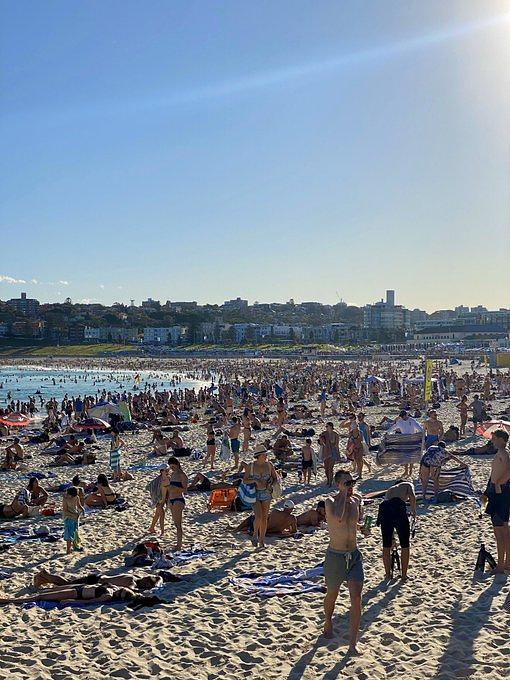Despite all the COVID news from Europe, and Italy in particular, it would seem that we’re learning nothing here in Australia. Our Government, and by extension the population as a whole, seems to be in reactive rather than proactive mode.
To wit, yesterday Bondi Beach was packed…

… and, in Sydney, 2,700 people were allowed to disembark from a cruise ship while 13 passengers were awaiting results of Covid swabs. Four have since discovered to be positive, so frantic announcements are being made for the other 2,696 passengers to quarantine themselves.
People are still going out to pubs, clubs and bars and our footie codes are one of the few codes globally who are still playing games, albeit behind closed doors. No doubt the Government will shut that all down in the near future, but if they are going to have to do it next week, they should just do it now. Learn from Europe & Asia’s prior experiences.
Australia’s case rate has been increasing at roughly 25% per day for the last ten days, reaching 768 yesterday. Some simplistic maths shows that if we continue on that path, in 4 weeks we’ll have approx. 360,000 cases, whereas if we can drop the rate to 10% daily increase we’ll “only” have 10,000 cases.
This edition of Axios Edge makes some key points.
The spread of the novel coronavirus is similarly a function of decisive action by heads of state, or the lack thereof. Governments alone determine whether the number of new cases increases exponentially, or whether it is brought under control within days.
and
The bottom line: In normal day-to-day life, someone with the novel coronavirus will infect more than 3 other individuals. That’s a simple recipe for exponential growth. Effective heads of state have shown that they have the ability to change individual behavior across their country so that the number gets reduced to less than 1.
When will our Govt. switch to proactive mode?





